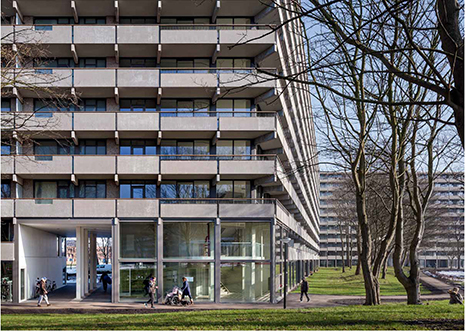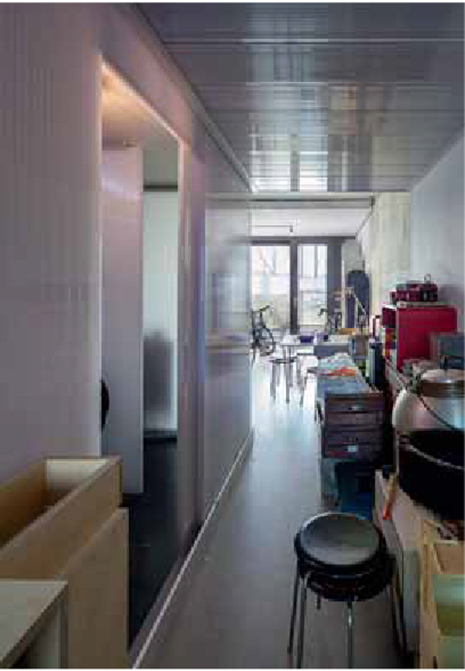Description
The renovation of DeFlat Kleiburg in Amsterdam-Bijlmermeer by NL Architects and XVW architectuur, and conceived by the project development group Kondor WesselsVastgoed, is the winner of the Mies van der Rohe Award 2017.
The legendary Bijlmermeer neighbourhood, built from 1969 to 1971 by the urban planner Siegfried Nassuth, was intended as the largest “new settlement for new people” in the Netherlands and adhered to Corbusier’s doctrine of the strict separation of people and traffic and the provision of light, air and sun. Nevertheless, “the Bijlmer” proved difficult to let and stood half vacant for many years. In 1975, the state used the remainder to house thousands of refugees from the East Indonesian province of Moluccas. The ethnic concentration and low integration efforts on both sides led to social decline and for a while, Bijlmermeer was regarded as the largest slum in Europe, full of gangs and drug criminality. In 1992, an El Al cargo aeroplane crashed into one of the housing blocks causing the deaths of 43 people. The politicians finally took action and large sections of the modernist buildings were demolished and replaced with more conventional, low-rise urban arrangements. One remaining half S-shaped section was eventually retained in its original condition – the 400-metre-long Kleiburg building – as concrete modernism gradually gained renewed appreciation in sections of society. Situated in the midst of attractive parkland with a lake, passed by an elevated suburban railway, it was intended to become a kind of “Bijlmermuseum of modernism”.
Rather than a high cost renovation, the housing association put the building up for sale for the nominal cost of one euro. A young consortium of developers who had had good experience with the “Klusflat” method – building shells for do-it-yourself construction – stepped up to the challenge and were awarded the contract with the concept of applying the same innovative approach at a much larger scale. The result is a stripped-back concrete construction with no other visual adornments, and the shells of the apartments were quickly sold for the considerably cheaper price of 1200 € per square metre. Each prospective buyer was permitted to purchase only one apartment for their own use to prevent speculation. The low price also contributed to a mix of different residents including locals and immigrants. The revenue was used to gut the parking decks, improve access with more spacious staircases and lifts, as well as the installation of storage space next to the circulation cores. The façades were renovated and glazed from floor to ceiling.
In architectural terms, the industrial construction method offers structural freedom, making bright, column-free apartments possible that can also be extended laterally, upwards or downwards to achieve apartment sizes ranging from 50 to 150 m². Similarly, the structure affords greater freedom in apartment layouts that range from typical apartments with many small rooms to open loft living or home working configurations. A ten-person monastic community has even settled in the middle of one of the gallery access blocks where it is quietest. The ground floor, which was previously mostly uninhabited due to crime, was joined with the floor above to create two-storey ground-level “terraced houses” with large windows and no curtains, as is customary in Holland, that create both a sense of variety as well as security.
The great promises of urban modernism – living in spacious green environments of rolling landscapes, lakes and ponds, free from traffic but with a good public transport connection to the city centre – have once again been made visible in this renewal of a seminal work of modernist architecture.
Originally published in Bauwelt 17.2017, pp. 22-27, abridged and edited for Building Types online, translated by Julian Reisenberger
Drawings
Photos
 Exterior view
Exterior view
 Interior view of remodeled apartment
Interior view of remodeled apartment